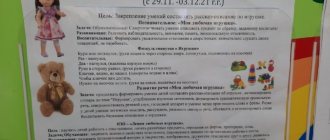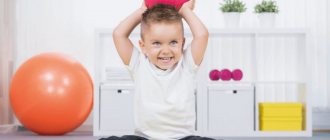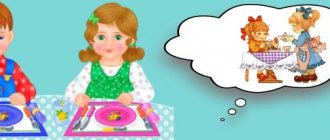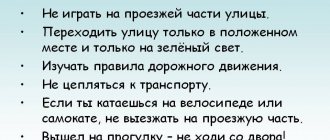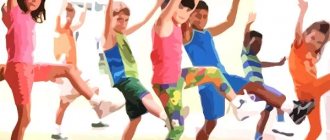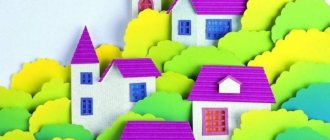Types of teachers' councils
In Soviet times, the processes of education, upbringing and development of preschoolers took place according to standard programs. Today, educators have the right to choose. It is discussed at special meetings, which are held with the participation of the entire teaching staff.
According to the Federal Law “On Education”, it is customary to hold at least 4 assemblies. All discussions are recorded. In accordance with all requirements and standards, several types of teacher councils are held in kindergartens. These include:
- the kick-off meeting is also the first one. It is held, accordingly, at the beginning of autumn. The main tasks and goals of the event are to sum up the results of the past summer period - holidays and approve a new plan and operating mode of the preschool institution. Senior educators and educators prepare especially carefully for it. During training, teachers develop new programs for the development of children, create all the conditions for the implementation of their goals, and at the same time collect and draw up all the documentation. The task of the senior teacher as part of the orientation council is to give recommendations to other teachers on drawing up programs, and at the same time select methodological literature;
- The current teacher council in kindergartens must be held twice a year. The purpose of the meeting is to discuss the work of the teacher. Preschool employees prepare carefully for the event, preparing open reports on their activities. These reports contain topics that meet all the goals and objectives set at the kickoff meeting. During the teacher’s speech, he shares his experience, the results of the work done, and reports on the effectiveness of his activities. The topic of teacher councils is discussed in advance. As a rule, they are similar from year to year. The most frequently asked questions are on the following topics:
- Development of children of different ages through play.
- Individual approach to the development and education of students.
- Environmental, labor, aesthetic or humane education for preschool children.
- Gender approach to the educational process;
- final meeting - the event takes place at the end of the academic year - in May or June. The purpose of the event is to summarize the results of the past period, draw conclusions and groundwork for the coming year. Before holding the council, kindergarten workers carry out various types of work: interviewing parents, filling out pupils’ development cards. Specialists such as psychologists, speech therapists, health workers, and music directors prepare a report for each child. Taking into account all the performances, a work plan for the summer period is drawn up, and activities for the next academic year are predicted.
Types and forms of holding pedagogical councils in preschool educational institutions.
Types of teachers' councils
- Installation teachers' council
The name comes from the word “set” introduced into psychology by D.N. Uznadze, and means readiness for a certain activity depending on the presence of a need and the objective situation, its satisfaction.
The mission of the orientation teachers' council is to create conditions for a reassessment of values, to try to change the opinions, views, judgments and ideas of the teacher about children, to awaken the desire to learn new things, to create conditions for the development of the child's personality.
The convention of the name “setting” is obvious, since any teachers’ council is called upon to work to change the teacher’s attitudes. This teachers' council provides guidance for the new school year.
- Thematic teachers' council
This type of teacher council is dedicated to a specific topic. The topic is determined by the annual task of the preschool educational institution or an emerging problem that needs to be solved.
The formulation of the topic is the central mechanism for focusing the attention and inspiration of all members of the teachers' council.
The title of the topic should not be long, dry, listing goals and objectives.
- Final teaching council
The purpose of such a teachers' council is to analyze the results of the academic year, identify and define strategic and developmental problems.
It is important to pay serious attention to the preparation of such a teacher council, so that the entire team is involved in the analysis of what has been done during the school year, to determine their successes and failures.
Conditional division
pedagogical councils
according to the form of organization
- Traditional
- this is a teachers' council with a detailed agenda, held with strict adherence to the regulations on each issue and making decisions on them.
- Teachers' council using separate activation methods
teachers.
During the meeting, the chairman may invite participants to solve a crossword puzzle, a situational problem, or use the “game modeling” method.
- Non-traditional teachers' council
. Its preparation requires writing a script, dividing participants into teams and assigning roles.
IMPORTANT: the result of the work of any teachers’ council should be the adoption of decisions to improve the work of the team.
Forms of conducting
thematic teaching councils
- Teachers' Council - a business game
Can be used to summarize the work of a team on a particular issue or for a certain period. The main place in such a teachers' council is occupied by group activities.
- Teachers' council-conference
May consist of several components. For example, the main message and dialogue, which is organized by the senior educator together with a group of specialists. The answers of these specialists to the questions asked will encourage all participants to ask questions, discuss, develop the topic, and express their opinions.
- Teachers' Council "Round Table"
To prepare it, it is necessary to collect important, interesting issues for discussion, and think through the organization. To do this, some questions can be given to a group of teachers in advance. They will be able to get acquainted with different theories, approaches, opinions and think about their point of view on this issue (topic). It is important to choose a facilitator who can quickly navigate the issues and guide the discussion.
- Situational teachers' council
One or more pedagogical situations are considered, which can be played out here by pre-prepared participants of the pedagogical council. You can discuss the situation based on the footage recorded on camera.
- Teachers' council-discussion
Teachers are divided into groups in advance and prepare their concept of the problem being discussed. During the discussion, a plan to solve the problem is jointly thought out.
- Pedagogical Council "Scientific and Practical Conference"
This teacher council can be prepared and held by combining the efforts of several preschool educational institutions. It is important to draw up an agenda so that each preschool educational institution, under the same conditions, can participate on equal terms in presenting its experience, discussing problems and proposals for developing solutions.
- Pedagogical Council "Auction"
Teachers come to such a pedagogical council with ready-made ideas, with their own solutions, which they offer to others. The teacher justifies these ideas and decisions, reveals (“praises”), and uses various techniques (visual, verbal, practical). At the end of the teachers' meeting, the creative group selects ("buys") the most interesting and innovative ones for execution.
- Pedagogical council excursions, travel.
This form of teachers' council involves the use of several premises, and maybe even buildings. For example, a teacher’s meeting on the topic of recreational work can be held using the premises
- Methodical office
- Gym, swimming pool
- Medical office
- Teachers' council is a process.
A teachers' council of this form is structured according to the type of trial in which there are prosecutors, accused, defense, and jurors. During such a teachers' meeting, some problems of the preschool educational institution are usually identified. At the same time, both positive and negative aspects of any issue or phenomenon are determined.
- Teachers' council - brainstorming
The brainstorming method was put forward by the American naval officer Alex Osborne in the 40s of the twentieth century. This method involves putting forward various hypotheses, problems, and ideas. Everyone says what they think on this issue. However, criticism of statements is prohibited.
There are two types of brainstorming
:
—straight
– putting forward advantages and tasks to solve positive factors:
— back
– identifying the maximum number of shortcomings and searching for their elimination.
Rules for conducting pedagogical discussions
Hosting an event is not that easy. You need to know the key rules. Teacher councils in kindergarten should be held as follows:
- the entire teaching staff of the preschool institution must be present;
- must pass at least 4 councils throughout the year;
- the schedule of meetings is regulated at the legislative level;
- there should be several speakers;
- Minutes must be kept at every event. It will look like a stitched magazine. All entries will be handwritten and pages will be numbered. When filling out, all teachers presenting a report, the topics of their speeches, discussions and decisions are indicated. At the event itself, the secretary of the teachers' council writes a draft, and after 5 days presents the finished protocol;
- The results of teachers' councils must be maintained properly. The minutes indicate the date, number of the event, the number of all teachers present and absent teachers, the topic of the event, the agenda, the goals of the meeting, the results of the discussion achieved;
- The topics of all councils are regulated by the annual plan of the preschool educational institution at the beginning of each academic year.
Speeches at teachers' councils of MADOU kindergarten No. 32 consultation
MUNICIPAL AUTONOMOUS PRE-SCHOOL EDUCATIONAL INSTITUTION KINDERGARTEN No. 32 “BUSINKA”
"Approved" Senior teacher
G.N.Ivanova
Report on the topic: “Developmental environment for environmental education: environmental complexes in preschool educational institutions.”
Prepared by the teacher of the 1st quarter. categories
Educator: Cholovskaya Svetlana Vitalievna
29.11.2017
g.o. Khimki, 2022
One of the important conditions for the implementation of an environmental education system in a preschool institution is the correct organization and greening of the developmental environment. The concept of a developing subject environment was developed by S.N. Novoselova, who defines it as a system of material objects of a child’s activity, functionally modeling the content of the development of his spiritual and physical appearance; an enriched environment presupposes the unity of social and natural means of ensuring a child’s varied activities. As already noted, currently there is a certain contradiction between the child’s natural need to communicate with nature as a living being and his alienation from nature, which plays a negative role from the point of view of environmental education. This alienation can be partially overcome through the greening of the developing subject environment. This process must correspond to the goals of creating a developmental subject environment as such, that is, contribute to the development of the child as a whole, his formation as an individual, and satisfy his needs in various types of activities. The main task is to create conditions for the formation in the child of elements of environmental culture, environmentally literate behavior, and the implementation of new ideas about the universality and intrinsic value of nature.
From the point of view of environmental education, the environment in a preschool institution should contribute to:
- cognitive development of the child (creating conditions for cognitive activity, experimenting with natural materials, systematic observations of objects of living and inanimate nature; developing interest in natural phenomena, searching for answers to questions that interest the child and posing new questions);
- ecological and aesthetic development (attracting the child’s attention to the surrounding natural objects, developing the ability to see the beauty of the surrounding natural world, the diversity of its colors and shapes;
- preference for natural objects over artificial objects);
- child health (use of environmentally friendly materials for interior design, toys; assessment of the environmental situation of the territory of a preschool institution; competent design, landscaping of the territory; creation of conditions for excursions, outdoor activities);
- formation of the child’s moral qualities (creating conditions for regular care of living objects and communication with them, fostering a sense of responsibility, desire and ability to preserve the natural world around them);
- formation of environmentally literate behavior (skills in rational environmental management; caring for animals, plants, environmentally literate behavior in nature);
- greening various types of child activities (creating conditions for independent games, experiments with natural materials, using natural materials in art classes, etc.).
Currently, preschool institutions differ from each other in terms of material capabilities, the initial level of greening of the developing subject environment, and the areas of activity of the teaching staff. These circumstances explain the need for a variable approach to the organization of a developmental subject environment, which must correspond to the goals and objectives of a particular teaching team at this stage of work.
Any developmental environment consists of a variety of elements, each of which performs its own functional role. From the point of view of environmental education, we can distinguish traditional and non-traditional elements of a developmental subject environment for preschool institutions. The table lists the functional roles of various elements of the developmental subject environment and their use for conducting a variety of activities.
| RPS elements | Functional role | Forms and methods of work |
| Ecological room (class) | Educational, relaxation | Ecological activities, games, independent games in a corner of nature |
| Laboratory | Educational, cognitive activity, mental development | Conducting research, experimenting, observing |
| Pets' corner | Relaxation, cognitive, development of the emotional sphere, acquisition of skills in caring for living organisms, education, caring for living beings | Observation and care of plants and animals |
| Winter Garden | Wellness, relaxation, cognitive, acquisition of skills in caring for living organisms | Independent games, relaxation, plant care, observations, health exercises |
| Library | Cognitive, | Reading, looking at |
| developing an interest in reading | illustrations in books about nature, holding conversations, discussing what they read, holding competitions | |
| Ecological path | Cognitive, development of the emotional sphere, communication with nature | Conducting complex classes that take into account the child’s sensory development, consolidation of material, familiarization with natural objects, games, theatrical activities, research work |
| Vegetable garden, garden | Education of labor skills, aesthetic, cognitive, health, development of the emotional sphere, development of environmentally friendly behavior skills | Plant care, observations, collection and use of environmentally friendly crops, familiarization with environmental safety rules |
| Kindergarten territory (landscape, architectural objects) | Cognitive, aesthetic, gaming, development of the emotional sphere | Creation of fragments of natural and cultural landscapes, elementary architectural structures, playgrounds and sports grounds that will be used for excursions, games, and folklore festivals |
| Museum, art gallery | Local history, educational, historical, ethnographic, landscape, cultural, family, aesthetic | Excursions to local museums, galleries, studying paintings with landscapes, creating museums and mini-museums in preschool educational institutions |
| Art studio (art studio), design studio | Ecological-aesthetic, emotional | Integrated (ecological-aesthetic) classes, production of costumes, decorations for holidays (including from waste material), games, illustrations |
| to works of art and children's fairy tales | ||
| theatre studio | Aesthetic, development of fantasy, speech, acting skills through participation in environmental issues | Ecological dramatizations, performances with the participation of children, puppet shows with environmental content, theater of puppets made from waste material |
| Music hall | Ecological and aesthetic | Conducting environmental and folklore festivals, music classes related to the theme of nature |
| Gym | Health improvement, development of empathy for living beings, physical development | Outdoor games, transformation exercises into plants and animals, relay races, environmental health walks |
| Pool | Wellness, gaming, educational | Classes (mainly on the block “Water”, “Animals”), environmental holidays |
| Corridors, halls | Cognitive, developmental, aesthetic | Creation of separate corners, landscapes, folklore elements, mini-planetariums, art galleries, design of information about the program, etc. |
| Computer class (or separate computers) | Development of intellectual abilities, work skills computers, modeling situations, solving situational problems | Computer games with environmental content for preschoolers, listening to recordings of nature sounds |
| Labor room (manual, artistic) | Nurturing hard work, developing imagination | Making crafts from natural and waste materials, equipment for classes, performances |
| Corners in groups (experimental, | Cognitive, aesthetic, | Independent research, games, communication |
| natural, exhibition) | emotional development, intellectual development, development of imagination, acquisition of independent work skills | with living organisms and caring for them, thematic exhibitions of children's works |
| Phytobar | Wellness, educational, relaxation | Familiarization with plants during medical procedures |
All of the above elements can be combined into an ecological complex of a preschool institution. The core of such a complex consists of an ecological room, a corner of nature (winter garden), a laboratory and corners in groups. Currently, environmental complexes have been created in many preschool institutions in the country. All of them are different from each other, but they perform the same role - they increase the effectiveness of environmental education. Let us consider individual elements of the ecological complex.
The ecological room (ecological class, nature room, room of friends of nature, ecological living room) is a relatively new element of the developmental subject environment. The names of this element of the environment may be different in different preschool institutions. Sometimes the question arises: is it possible to use the word “class” in a preschool institution? It seems to us that it is not the name itself that is important, but the content and form of the work for which it is intended. If the word “class” does not entail a mechanical transfer of the school version of education to kindergarten (which is unacceptable), then it can also be used. In this case, for a child, “class” is a designation of a special room, different from a group room. Moreover, as experience shows, children’s positive attitude towards the environmental class is transferred to their attitude towards school (“there are classes there too”). In addition, the purpose of creating an environmental class (room) in a kindergarten, unlike a school one, is not only education, its tasks are much more diverse.
Another question that is sometimes discussed is: is an ecological room needed at all in a kindergarten? Maybe it’s enough to have living corners in groups? Teachers of preschool institutions who have already created such an element of the environment are unanimous in their opinion: an ecological room creates a special, unique environment, evokes positive emotions, helps to relax, unwind, and at the same time makes any activity in this room very attractive for children. The very fact that you need to go to the environmental room, go outside your group, affects the child’s attitude towards classes. He tunes in to perceive something unusual, especially since the external
The appearance of the ecological room is really very different from everything that a child sees around him every day. At home, preschoolers constantly talk about what they did in the environmental room, what they liked most there, and invite their parents to visit. The children constantly ask to be taken to the environmental room as often as possible and given the opportunity to make independent observations. Some kindergartens noted that such premises also facilitate faster adaptation of newly admitted children who like the unusual environment. They are very eager to go to kindergarten, “to see the environmental room” (as older children explain their desire). Of course, not all preschool institutions can allocate large premises for an environmental room, but if desired, you can always find a way out of the situation, as they did, for example, in some preschool educational institutions, by transforming some utility rooms.
Optimally (depending on size), the room is divided into a number of functional zones.
The training area should be well lit, and therefore, as a rule, a part of the room near the windows is allocated for it. Here there is a table for the teacher and small tables, sitting at which children can draw, sculpt, and work with teaching aids. Our work experience has shown that even such a seemingly insignificant detail as the arrangement of furniture affects the relationship between children and the teacher, so the arrangement of tables should not copy the school classroom. They can be arranged in a circle or in a “P” shape, that is, in such a way that the teacher works not “on”, but together with the children. This is important for the implementation of the principles of cooperation pedagogy and a dialogue form of learning. Preschoolers are at the tables only if they are doing certain practical work. During other types of activities (for example, reading literary works, working with a box of sensations, games), preschoolers sit comfortably on sofas, armchairs, low soft chairs or on the floor (on the carpet). Such areas should also be provided when decorating the premises.
The collections area is intended to introduce children to various natural objects, to develop their skills in classifying objects according to various criteria, and sensory skills. The collection material also serves as visual material. Collections are located in special cabinets or on shelves at a level accessible to a child’s gaze (very often, teachers place collection materials at the level of perception of an adult, not a child). The following aspects should be considered when collecting samples:
Availability of objects for collection. Kindergarten collections should include, first of all, samples that preschoolers and their parents can collect - stones, various plant seeds, dry leaves, branches, dry bark of trees, shrubs, samples of sand, clay, various soils, river and sea shells and so on.
Diversity. In the collection area, objects of both living and inanimate nature are represented to one degree or another (as far as possible).
Local history aspect. The collections should represent natural objects of the area where the preschool institution is located. This will allow the teacher to use in their work objects that are already familiar to children, which they will be able to look at from new positions. Local material forms the basis, the basic core of the collections.
Regional aspect. Collections can be replenished by material brought by preschoolers and their parents from various regions of our country and other countries that they visit during various travels and vacations. Any brought object can serve as an excellent reason to start a conversation about countries, customs, nature, peoples of the Earth, that is, contribute to the formation of the foundations of global thinking.
Environmental aspect. Its implementation contributes to the formation of the foundations of environmental thinking in preschoolers. This is also important from a bioethical point of view. There is no need to include butterflies and beetles collected and dried by children and parents in the collection objects. Currently, some preschool institutions give parents a number of tasks for the summer: collect collections of flowering plants of the meadow, forest, leaves of different types of trees, collections of insects. In this case, the following argument is put forward as a justification: for collections, children collect not rare, protected, but widespread species. However, from the point of view of developing in a child a careful, respectful, emotional attitude towards nature and the perception of himself as part of it, it is important to educate on the objects of the immediate environment, that is, on commonly occurring species, and not just rare ones, which he (quite likely) will not encounter in my life in general. In addition, dry herbarium samples, as a rule, do not always contribute to the formation of correct ideas about plants in a child. The author’s work experience has shown that even primary and secondary school students (not to mention preschoolers), who are excellent at identifying plants from herbariums and drawings, often find it difficult to identify the same plants in a forest or meadow. In addition, the herbarium requires certain storage conditions, which are difficult to provide in a kindergarten. If we take into account the state of the herbarium in some kindergartens (yellowed, dusty specimens, the flowers of which have long lost their original color), then we can conclude that working with such material in a kindergarten is unlikely to give a good result. Flat plants that have lost their color, smell and often shape, plants torn out from their natural environment or motionless bees pinned on pins, butterflies with drooping wings are not able to evoke in a child positive emotions and a desire to take care of natural objects. In one of the kindergartens, while studying the topic “Living and Inanimate Nature,” the children did not agree with the teacher who showed collections of insects as objects of living nature; they did not want to recognize “living” beetles in dead beetles.
nature." At the same time, observing live butterflies and beetles in the park, they accurately answered the question.
Thus, in our opinion, it is better to start introducing children to trees, grasses, and animals directly in nature, and to reinforce the material, use good drawings, photographs, videos, and slides.
It is also not recommended to buy ready-made collections of insects and stuffed animals. Firstly, a child must understand from childhood that demand creates supply: the more collections are bought, the more animals are caught, and often the largest, most beautiful, rare species predominate among them. This is just an example of the fact that even the specific action of a child - the desire to have a collection of beautiful butterflies - depends on the life of insects common in countries far from him.
In a number of environmentally oriented preschool institutions, they strive to create entire landscapes from stuffed various animals, dried trees, and shrubs. Experience shows that children themselves feel the artificiality of such a situation and ask questions: “What, they killed this bird to show us?” (statement by a 6-year-old girl about a stuffed black grouse in one of the kindergartens). With this approach, the child has the opportunity to become more familiar with representatives of the local fauna and flora, but from the point of view of environmental education, the teacher receives a negative result. It is better to study stuffed animals and collections of animals in local history museums, but preference should be given to children’s communication with living creatures in nature or with domestic animals.
Safety. Any object in the collection area must be safe for children, both from the point of view of various mechanical damage (for example, stones should not have sharp edges; their sharp edges can be tapped with a hammer) and from a health point of view (bird feathers and other objects used should be clean, non-allergenic, etc.). Stones, sand samples, seeds, plant inflorescences (that have fallen to the ground) should be collected away from areas frequented by dogs and cats.
The relaxation zone is a corner with a variety of indoor plants, aquariums, an alpine slide, and a fountain. Designed primarily for children's recreation, independent play and for developing plant care skills. It is not recommended to place animals (except aquarium fish) in this area, as this distracts preschoolers from their studies. The relaxation area can include fountains, treated hemp, and logs of various sizes that serve as chairs and tables.
The library area is a corner where colorful books, encyclopedias for children, periodicals (environmental magazines “Svirel”, “Svirelka”, “Kindergarten”) are collected. It is not recommended to place teaching aids for teachers in the corner, as is sometimes done. It is better to place all pedagogical literature in the teaching room.
In the library area there may be dolls - fairy-tale characters that are used in ecology classes, globes, and children's atlases. The technical complex is also located here - a TV, a video recorder, a tape recorder (music center) or player, an overhead projector, a projector for slides, the slides themselves, videos, audio cassettes, records (it all depends on the capabilities of the kindergarten).
On the walls of the ecological room are hung a physical-geographical (not political!) map of the world, Russia, the region, maps of ecological paths, and nature calendars. Various models can be exhibited in the room, including a model of the territory of a preschool educational institution, and three-dimensional nature calendars.
The design of an ecological room should serve as an example of safe design of premises and contribute to the development of environmentally literate behavior in children and adults in everyday life. From this perspective, it is best to use only natural materials, excluding, if possible, artificial flowers and environmentally unfriendly building materials (primarily synthetic).
The laboratory is created to develop children's cognitive interest, increase interest in research activities and contribute to the formation of the foundations of a scientific worldview. At the same time, the laboratory is the basis for the child’s specific play activities (work in the laboratory involves turning children into scientists who conduct experiments, experiments, and observations on various topics). Recently, sociologists have noted that television and many books form in children the idea of scientists as half-crazed geniuses who are secretly doing something unsafe for all humanity. Thus, American experts, as a result of surveys, found that most people (including children) imagine a scientist as an eccentric man with glasses, with tousled hair (optionally, bald), in a white coat, with a carton of milk and a loaf of bread in his bag. His surroundings are tables with a huge number of different test tubes, flasks with substances that periodically explode (something like a sorcerer’s “workplace”). And in our country, unlike in previous years, the image of a scientist began to differ little from the image created in the same films. Experts are sounding the alarm: ideas about scientists obtained from films make this profession unattractive for children, and they consider science on a par with magic and witchcraft, which is far from harmless. Therefore, it is extremely important from childhood to form in preschoolers respect and interest in the profession of scientists (regardless of whether they themselves become scientists in the future). The research that preschoolers conduct in the laboratory gives them a completely different image of scientists, develops respect for scientific work and trust in science.
Several types of laboratories can be distinguished: a laboratory in a separate room, in an environmental room, in a group (mini-laboratory), a laboratory in the territory of a kindergarten.
Laboratory design. Many kindergartens convert ordinary utility rooms into a laboratory. It is advisable that the laboratory have water taps and sinks. This will allow children to wash their hands immediately after classes, and teachers to quickly tidy up tables and equipment. A sign with the name and logo is posted on the laboratory door. Children and their teachers can come up with the logo and name of the laboratory.
Setting up a laboratory does not require large additional costs. Depending on the size of the room, the laboratory may have either only small tables or tables with chairs. Racks (shelves) for equipment and materials are also located here. You can place boxes with plants on the windowsills for observation. Artificial plants should be avoided when decorating a laboratory. You can hang portraits of famous scientists on the walls.
Equipment. Waste materials, in particular packaging, of various sizes and shapes for conducting experiments: cups of varying degrees of transparency from yogurt, sour cream and other dairy products, ice cream, cake boxes, etc., plastic spoons for bulk materials, sticks , cocktail straws (new), filter paper (such as blotting paper or napkin). It is good to involve children and parents in the selection of equipment. In this case, the process of designing a laboratory itself will have an educational value (implementation of the slogan “Waste into income!”). For teacher demonstrations of individual experiments, transparent plastic cereal jars are suitable. Magnifying glasses are a must. As additional equipment, you can purchase microscopes, a barometer, thermometers, hourglasses, binoculars, and kits for playing with water. It is important to remember that the microscope should not be too difficult to use; special microscopes for children are best suited, which are usually accompanied by various preparations for research. The more expensive the microscope, the more difficult it is to prepare preparations for it. It is enough to have five microscopes per subgroup. A set of equipment for a specific lesson is prepared for each child by the teacher in advance and placed on an individual small tray or oilcloth.
Materials for work
In the laboratory it is convenient to store natural materials intended for various studies: sand, clay, stones, plant seeds (not samples of collections, but mass material for organizing classes).
Features of conducting classes in the laboratory
As already indicated, when children come to the laboratory, they become “scientists” and study various natural objects and phenomena. During
During experiments, they put on white coats, for example, from old men's shirts, and receive identification badges that are attached to their chests. On such a badge, made of a paper rectangle or circle, the child’s last and first name is written, for example: “Scientist Stepanov Misha.” You can design appropriate icons for different types of research: “Water Explorers” (water droplet), “Air Explorers” (balloon).
Traditionally, preschool groups create living corners containing indoor plants and one or two species of animals. In experimental preschool institutions working under the “Our Home is Nature” program, small complexes of three corners have been created.
- Experimental corner. In this corner there is material with which the child can independently study (play, experiment). The composition of the material varies depending on the topic of environmental studies. Thus, during classes on the block “Sand, clay, stones,” the child is given the opportunity to independently experiment, play with these materials, examine them with a magnifying glass, repeat the experiments that he conducted under the guidance of a teacher in an environmental class, and build houses and cities from stones etc. Thus, the teacher, together with the parents, collects a variety of natural materials, which are then placed in sufficient quantities in the experimental corner. The organization of such a corner gives each child the opportunity to independently study each topic, since the time for collective classes in the environmental room is limited, and many preschoolers express a desire to continue experimental work.
- A corner of nature. This corner contains natural objects for care and observation. As a rule, this is an aquarium, a cage with parakeets or a golden hamster. Books, illustrations containing information about these animals, and items for caring for them are also placed here. Keeping animals and growing plants in groups allows the teacher to organize long-term observations and use the same objects for different purposes. The possibility of constant communication with a living being and caring for it also has a great influence on the child.
- Exhibition corner. Since the program involves children drawing, sculpting, and making appliqués, the groups accumulate a large amount of work. Regardless of the quality of the work, all the children’s drawings and crafts are exhibited in the group, and the best are selected for the exhibition of the entire kindergarten. This approach is psychologically comfortable and extremely important for increasing the child’s motivation and creating a desire to improve his work. In addition, photographs of children and parents communicating with nature, and children with the inhabitants of the living corner are periodically hung in the corner.
Materials for the installation teachers' council at the preschool educational institution
— developing the ability to apply these methods to help solve the problem, using various options;
— developing a desire to use special terminology, conducting a constructive conversation in the process of joint and then independent research activities. Principles
The basis for organizing work with children is the following system of didactic principles:
the principle of psychological comfort - an educational environment is created that ensures the removal of all stress-forming factors;
principle of activity - new knowledge is introduced not in ready-made form, but through the independent “discovery” of it by children;
the principle of variability - the ability to make their own choice is formed and they are systematically given the opportunity to choose;
the principle of creativity is a focus on children acquiring their own experience of creative activity.
In accordance with the Federal State Educational Standard for preschool education and with the requirements for the results of mastering the educational program, presented in the form of targets at the stage of completing the level of preschool education: one of the guidelines is curiosity. The child asks questions regarding near and distant objects and phenomena, is interested in cause-and-effect relationships (how? why? why?), tries to independently come up with explanations for natural phenomena and people’s actions. Tends to observe and experiment
Cognitive interest consists of the following interrelated processes: Intellectual - logical actions and operations (analysis, synthesis, generalization, comparison), evidence
Emotional - the experience of success, the joy of learning, pride in one’s achievements, satisfaction with one’s activities
Creative - imagination, creation of new models, images
Regulatory - volitional aspirations, focus, persistence, attention, decision making
The main advantage of the experimentation method is real ideas about the various aspects of the object being studied, about its relationships with other objects and with the habitat.
The development of a preschool child largely depends on the variety of activities that he masters in partnership with an adult. This is a playful and productive activity, the perception of fiction. But quite important in kindergarten is the cognitive and research activity of children, which is based on spontaneous experimentation and the child’s search activity. Of course, a child learns about the world in the process of any of his activities. But, it is in cognitive-research activities that the preschooler gets the opportunity to directly satisfy his inherent curiosity (why, why, how the world works) and practices in establishing cause-and-effect generic, spatial and temporal connections between objects and phenomena, which allows him not only to expand, but and organize your ideas about the world, achieve high mental development.
